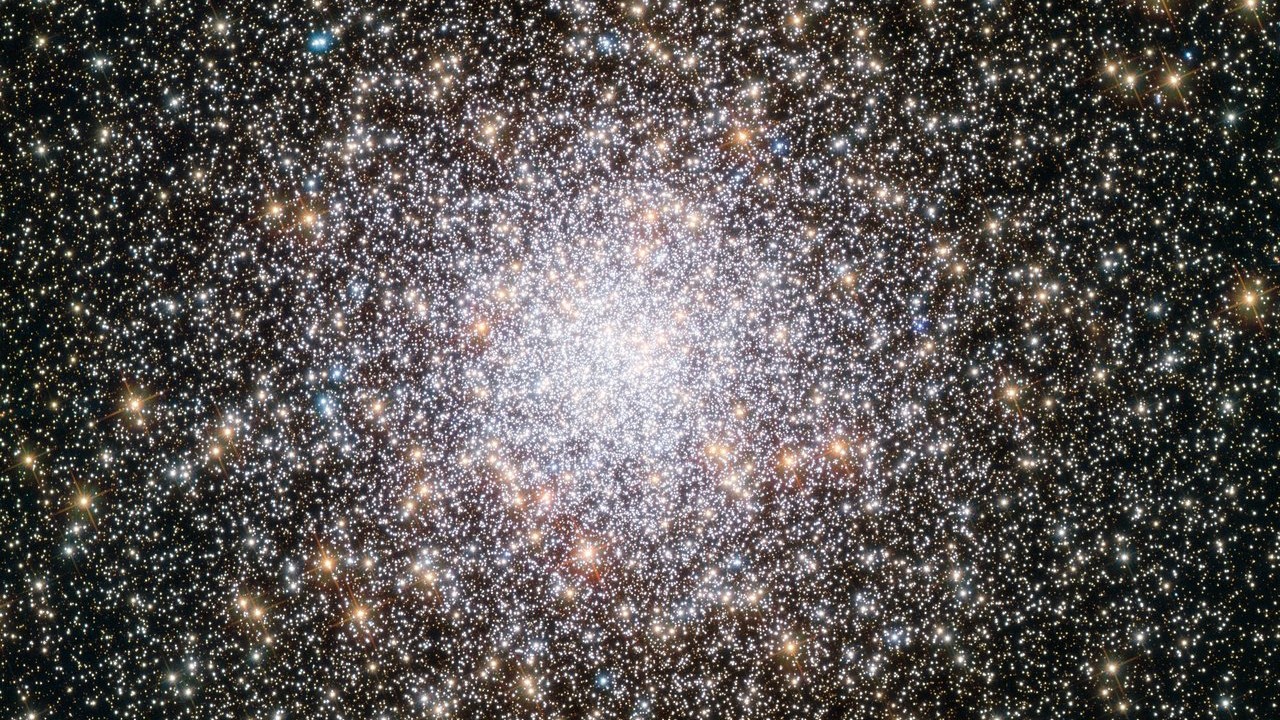
The James Webb Space Telescope (JWST) has discovered the first evidence that millions of supermassive stars up to 10,000 times the mass of the sun may be hiding at the dawn of the universe.
Born just 440 million years after the Big Bang, the stars could shed light on how our universe was first seeded with heavy elements. Researchers, who dubbed the giant stars “celestial monsters,” published their findings May 5 in the journal Astronomy and Astrophysics.
“Today, thanks to the data collected by the James Webb Space Telescope, we believe we have found a first clue of the presence of these extraordinary stars,” lead study author Corinne Charbonnel, an astronomy professor at the University of Geneva in Switzerland, said in a statement.
Related: The early universe was crammed with stars 10,000 times the size of our sun, new study suggests
The researchers found chemical traces of the gigantic stars inside globular clusters — clumps of tens of thousands to millions of tightly packed stars, many of which are among the most ancient to have ever formed in our universe. Roughly 180 globular clusters dot our Milky Way galaxy and, because they are so old, serve astronomers as windows through time into the earliest years of our universe.
Mysteriously, some of the stars in these clusters have wildly different proportions of elements (oxygen, nitrogen, sodium and aluminum) despite forming at roughly the same time and from the same gas and dust clouds 13.4 billion years ago.
Astronomers believe this elemental variety could be explained by the existence of supermassive stars — cosmic giants born in the denser conditions of the early universe that burned their fuel at much higher temperatures, producing heavier elements that subsequently “polluted” smaller infant stars (which usually consist of much lighter elements).
But finding these stars has proven difficult. Anywhere between 5,000 to 10,000 times the size of our sun, the fiery giants burned at temperatures of 135 million degrees Fahrenheit (75 million degrees Celsius). As bigger, brighter and hotter stars die out the fastest, these cosmic monsters have long since met their demise in extremely violent explosions called hypernovas.
“Globular clusters are between 10 and 13 billion years old, whereas the maximum lifespan of superstars is two million years. They therefore disappeared very early from the clusters that are currently observable. Only indirect traces remain,” co-author Mark Gieles, a professor of astrophysics at the University of Barcelona, said in the statement.
To spot the scattered chemical residue of the ancient monsters, the researchers trained the JWST’s infrared camera on the galaxy GN-z11, which is one of the most distant and ancient galaxies ever discovered, sitting 13.3 billion light-years away from Earth. Different chemicals absorb and emit light at different frequencies, so by breaking down the light coming from different globular clusters found across GN-z11, the astronomers discovered that not only were its stars tightly packed but they were surrounded by high levels of nitrogen.
“The strong presence of nitrogen can only be explained by the combustion of hydrogen at extremely high temperatures, which only the core of supermassive stars can reach,” Charbonnel said.
Having found the first clues for the celestial monsters, the researchers will look across more globular clusters in more galaxies to see if their discovery holds elsewhere.
Stay connected with us on social media platform for instant update click here to join our Twitter, & Facebook
We are now on Telegram. Click here to join our channel (@TechiUpdate) and stay updated with the latest Technology headlines.
For all the latest For Top Stories News Click Here
